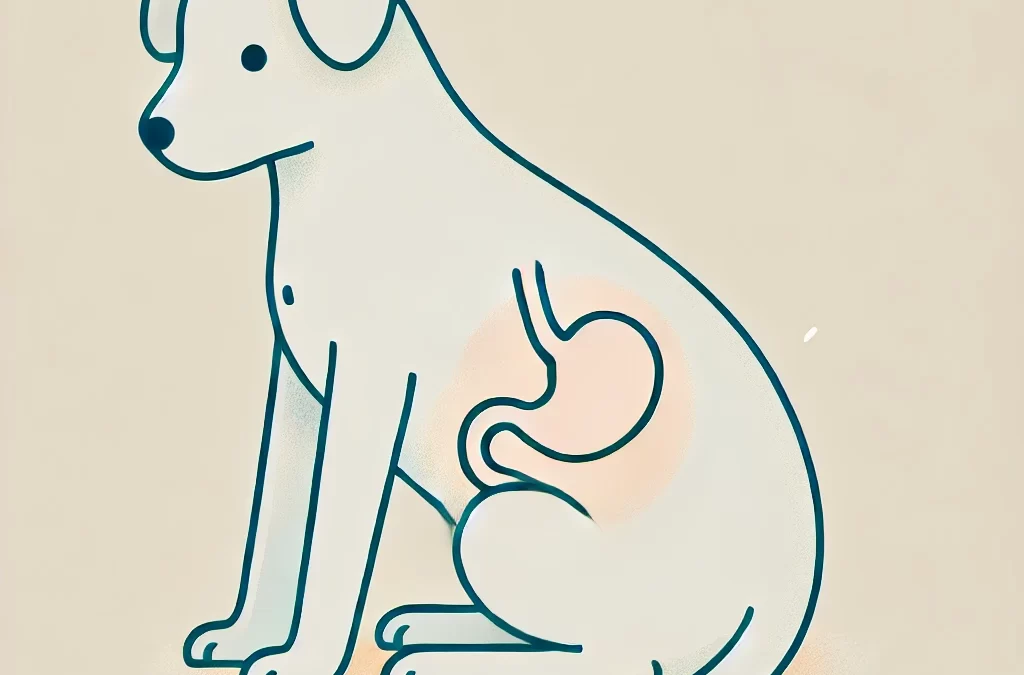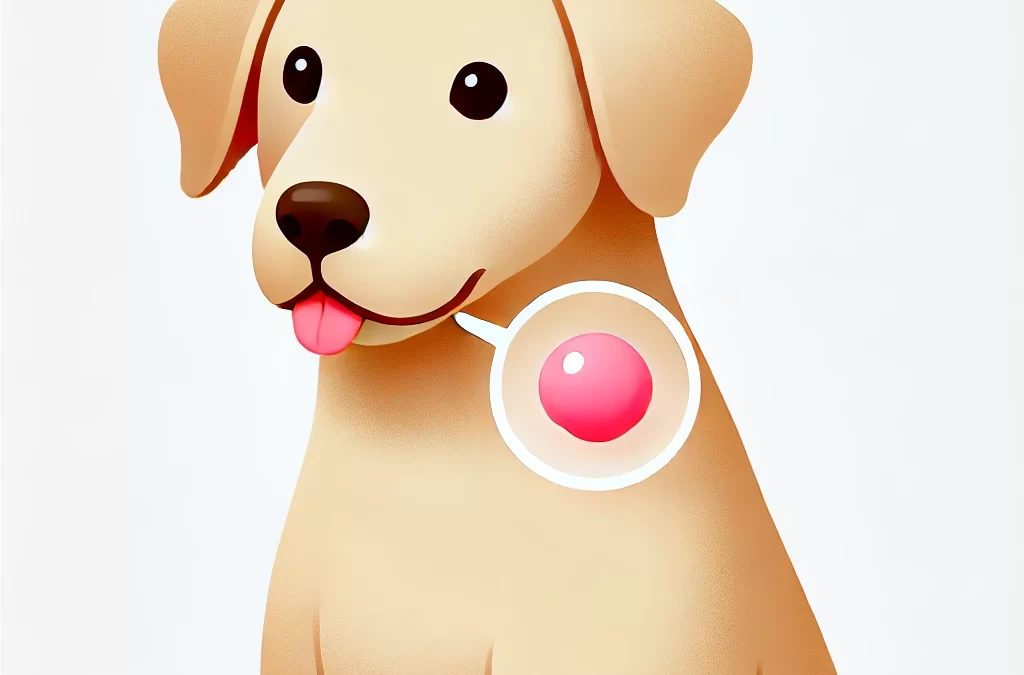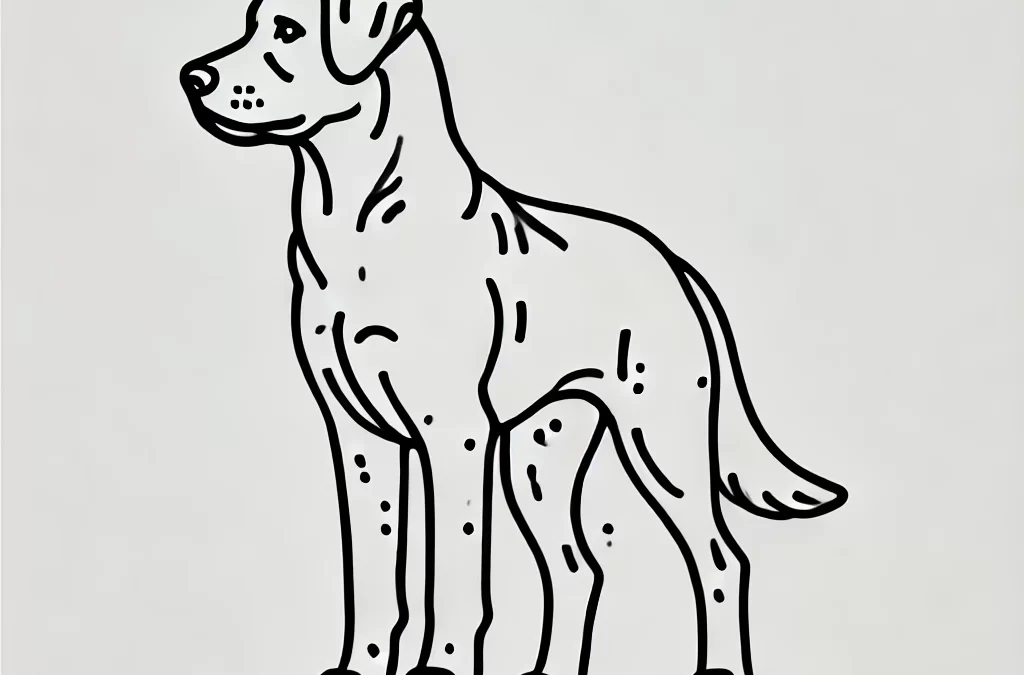
經過 TCMVET | 2024 年 11 月 11 日 | 狗癌症和腫瘤
在心愛的狗身上診斷出脾臟腫瘤可能會令人心痛,因為這些腫瘤通常會帶來嚴重的健康風險。然而,了解脾臟腫瘤的類型、存活率和潛在的治療方法可以幫助狗父母為寵物的健康做出最佳選擇。在這篇文章中,我們將從一個全新的角度探討狗的脾臟腫瘤,重點在於可以提供清晰度和希望的現實和選擇。
1. 什麼是脾腫瘤?
- 血管肉瘤:不幸的是,血管肉瘤是一種惡性且侵襲性的腫瘤類型,在犬的脾臟中很常見,並且經常迅速擴散到其他器官。
- 血管瘤和脾臟腫塊:良性腫瘤和腫塊也可能在脾臟上形成。雖然它們不像血管肉瘤那樣擴散,但它們可能會破裂,導致內出血。
- 淋巴瘤:這種類型產生於淋巴系統,也可能影響脾臟,使病情變得更加複雜。
2. 及早識別症狀
- 微妙的症狀:脾腫瘤在發展到晚期之前通常是無症狀的。症狀可能包括嗜睡、食慾不振和體重減輕。
- 急性危機:如果腫瘤破裂,症狀會迅速升級。牙齦蒼白、塌陷、腹部腫脹和呼吸困難可能是內出血的信號,需要立即就醫。
3. 存活率及其意義
- 脾血管肉瘤:對於血管肉瘤,由於其侵襲性,其預後通常很謹慎。僅手術的中位存活率可達 2-3 個月。
- 化療:手術與化療結合可以延長生存期,有時可以延長 6-12 個月,取決於個別狗的反應。
- 良性腫瘤和腫塊:良性腫塊的存活率要樂觀得多,因為手術切除通常可以提供完整的解決方案而不會復發。
4. 探索治療方案
- 手術治療:脾切除或切除脾臟是脾腫瘤最常見的治療方法。它可以立即緩解症狀並防止腫塊破裂引起的進一步併發症。
- 化療:通常建議用於血管肉瘤等惡性腫瘤以控制擴散,儘管它可能無法治癒。有些狗對化療的耐受性很好,幾乎沒有副作用。
- 替代療法:許多寵物父母探索天然補充劑,例如藥用蘑菇,這可能會增強免疫功能。雖然這些不能取代手術或化療,但它們可以作為補充支持。
5. 提供良好的生活品質
- 管理疼痛和舒適:疼痛管理對於確保良好的生活品質至關重要。獸醫經常推薦止痛藥物甚至針灸。
- 飲食與營養:提供富含抗氧化劑和增強免疫力的補充劑的均衡飲食可以支持整體健康,尤其是在治療或恢復期間。
- 低壓力環境:透過平靜和熟悉的環境最大程度地減少壓力可以產生很大的影響,幫助您的狗感到舒適和安全。
6. 為什麼仍有希望
- 有前途的研究:對犬癌症,特別是血管肉瘤的持續研究可能會帶來更好的治療和結果。
- 新療法:免疫療法和標靶治療正在開發中,其中一些在試驗中顯示出早期前景。儘管這些尚未廣泛應用,但它們為未來帶來了希望。
- 堅韌的故事:許多患有脾臟腫瘤的狗都克服了困難,活得比預期更長,特別是在細心的護理和及時的治療下。
7. 如何支持你的狗的旅程
- 獸醫指導:與獸醫建立牢固的關係至關重要。他們可以定制治療計劃並提供資源來管理您的狗的病情。
- 支持社區:許多線上支持小組為患有癌症的狗父母提供支持,提供鼓勵、建議和分享令人難以置信的振奮人心的經歷。
結論
狗的脾臟腫瘤帶來了獨特的挑戰,但透過及時診斷、明智的決策和富有同情心的護理,許多狗都能保持良好的生活品質。雖然生存率各不相同,但保持積極主動和充滿希望可以使一切變得不同。請記住,每次旅程都是獨一無二的,透過支持您的狗走過每一步,您就給予了它們應有的愛和關懷。

經過 TCMVET | 2024 年 11 月 11 日 | 狗癌症和腫瘤
當狗父母發現毛茸茸的朋友喉嚨裡有腫塊時,自然會感到擔憂。雖然有些腫塊可能無害,但其他腫塊可能表示有嚴重的健康問題。本文深入探討這些腫塊可能意味著什麼、如何識別相關跡像以及應採取的積極措施。
1. 為什麼狗狗的喉嚨會長出腫塊?
- 常見原因:良性生長物,例如脂肪瘤或囊腫,通常是無害的,但有時會出現在喉嚨附近。
- 感染或發炎:淋巴結腫大可能表示感染或免疫反應。
- 腫瘤:良性和惡性腫瘤都可能在喉嚨中發生,影響附近的組織和器官。
2. 您可能會注意到的腫塊類型
- 脂肪瘤:柔軟且易於移動,通常無痛。
- 淋巴結腫大:淋巴結腫大,感覺堅硬且通常對稱。
- 惡性腫瘤:堅硬、固定的腫塊,可能會導致不適或吞嚥困難。
3. 辨識腫塊以外的症狀
- 吞嚥困難:這可能是影響食道或周圍肌肉生長的指標。
- 咳嗽或作嘔:如果腫塊壓迫氣道,可能會引起呼吸道症狀。
- 食慾改變或體重減輕:如果伴隨持續性喉嚨腫塊,則需要嚴重註意。
4. 什麼時候該擔心?
- 快速成長:如果腫塊生長得很快,有必要請獸醫檢查。
- 疼痛和敏感性:如果出現不適或行為改變(例如迴避觸摸),則需要仔細觀察。
- 其他症狀:不明原因的嗜睡、持續咳嗽或聲音變化可能預示著潛在的問題。
5. 診斷:獸醫會發生什麼
- 體檢:獸醫會觸診該區域以評估其大小、質地和活動性。
- 影像學檢查:X 光或超音波掃描可顯示腫塊的深度和與其他器官的接近程度。
- 活檢:最明確的測試,採集樣本並檢查異常細胞。
6. 治療方案
- 警惕等待:對於良性腫塊,獸醫可能建議進行監測而不是立即乾預。
- 手術切除:如果腫塊幹擾日常活動或構成健康風險,手術是常見的選擇。
- 天然補充劑和療法:抗發炎補充劑或草藥支持可能對某些病症有益。
- 化療或放療:對於惡性腫瘤,獸醫可能會建議腫瘤治療。
7. 預防和監測
- 定期檢查:定期去看獸醫可以及早發現異常生長。
- 家庭監控:輕輕觸摸狗狗的喉嚨和其他部位是否有腫塊。如果發生任何更改,請保留日誌。
- 健康飲食和補充劑:營養豐富的食物和增強免疫力的補充劑可能有助於降低某些腫瘤的風險。
結論
雖然發現狗狗喉嚨裡有腫塊可能會令人不安,但主動護理和了解潛在原因可以讓您安心。請務必諮詢獸醫以獲得專業建議,並記住並非所有腫塊都是危險的。透過保持警惕,您正在採取最佳措施來確保您的狗的健康和幸福。

經過 TCMVET | 2024 年 11 月 8 日 | 狗癌症和腫瘤
狗在我們的生活中佔有重要的地位,它像徵著忠誠、陪伴和無限的歡樂。然而,某些品種在遺傳上容易患癌症,這使其成為許多狗主人的重大擔憂。了解哪些品種更容易患癌症以及為什麼可以幫助主人更加警惕和主動地管理寵物的健康。
風險較高的品種
雖然癌症可以影響任何狗,但某些品種由於其基因組成而表現出更高的發病率。以下是一些已知更容易患癌症的品種:
- 金毛尋回犬:黃金獵犬是最受歡迎的犬種之一,不幸的是,它也是癌症發生率最高的犬種之一。血管肉瘤和淋巴瘤在該品種中特別常見。
- 拳擊手:拳擊手以其頑皮和精力充沛的天性而聞名,很容易患上肥大細胞瘤和淋巴瘤。早期發現和定期檢查對於這個品種至關重要。
- 羅威納犬:羅威納犬容易罹患骨肉瘤,這是一種侵襲性的骨癌。它們的巨大體型和遺傳傾向使它們特別容易受到傷害。
- 伯恩山犬:此品種因其性情溫和而受到讚賞,但患組織細胞肉瘤的風險很高。主人應該監測任何異常的腫塊或行為變化。
- 德國牧羊犬:德國牧羊犬以其聰明和忠誠而聞名,可能會患上血管肉瘤和其他癌症。它們的體型較大,遺傳線也決定了它們的易感性。
了解遺傳聯繫
遺傳成分在為什麼某些品種更容易患癌症方面發揮著重要作用。選擇性育種雖然通常旨在增強理想的性狀,但可能會無意中傳遞使狗容易患各種癌症的基因。基因突變、遺傳症候群和品種特異性是導致風險增加的因素。
認識跡象
早期發現可以對治療結果產生重大影響。以下是業主應注意的一些關鍵症狀:
- 不明原因的體重減輕
- 嗜睡或對活動的興趣降低
- 持續性腫塊或生長
- 飲食習慣的改變
- 氣喘吁籲或呼吸困難,尤其是在晚上
預防措施和主動護理
雖然有些癌症無法預防,但主人可以採取措施降低風險並促進整體健康:
- 定期獸醫檢查:例行訪問有助於及早發現潛在問題。
- 均衡飲食與運動:保持健康的體重並確保適當的營養可以支持免疫系統。
- 基因檢測:對於高風險品種,基因檢測可以深入了解潛在的傾向。
- 對特定品種風險的認識:了解風險可以讓業主在照護上更加敏銳和主動。
呼籲研究和認識
正在進行的犬癌症研究旨在更好地了解導致這些疾病的遺傳和環境因素。提高認識運動和為獸醫腫瘤學提供資金對於推進治療方案和預防策略至關重要。
結論
擁有一隻易患癌症品種的狗並不意味著不可避免的心痛;相反,它強調知識和準備的重要性。透過了解風險、識別跡象並保持積極主動的護理,主人可以為他們心愛的伴侶提供更高品質的生活和更多珍貴的共同時光。

經過 TCMVET | 2024 年 11 月 8 日 | 狗癌症和腫瘤
狗在我們的生活中佔有重要的地位,它像徵著忠誠、陪伴和無限的歡樂。然而,當一隻狗被診斷出患有癌症時,這種經歷就會成為一種情感和身體上的挑戰,不僅對狗來說,對主人也是如此。患有癌症的狗經常被忽視但顯著的症狀是夜間喘氣。這種微妙但令人痛苦的行為提供了對狗的狀況的深入了解,可以指導主人和獸醫更好地照顧和管理。
氣喘吁籲背後的科學
喘氣是狗的自然行為,主要用於調節體溫。然而,當它變得過多或發生在不尋常的時間(例如夜間)時,可能表示存在潛在的健康問題。對於患有癌症的狗來說,夜間喘氣可能源於多種原因,包括疼痛、焦慮、藥物副作用或正常代謝功能的破壞。
揭開原因
- Pain and Discomfort:疼痛是患有癌症的狗在夜間更頻繁地喘氣的主要原因之一。某些類型的癌症,例如骨肉瘤或侵襲性腫瘤,可能會引起明顯的不適,當狗躺下或變得不那麼活躍時,情況可能會惡化。
- 藥物副作用:化療、止痛藥物或皮質類固醇通常在癌症治療中發揮作用,但可能會產生副作用。例如,皮質類固醇可能會由於體內荷爾蒙的變化而導致口渴和氣喘的增加。
- 焦慮不安:癌症會改變狗的行為,導致焦慮,尤其是在晚上,當它們必須默默應對不適時。當狗狗努力尋求安慰時,氣喘吁籲可能是不安或不安的表現。
- 代謝紊亂:腫瘤和相關的癌症治療會影響代謝過程,導致狗的呼吸頻率增加。當身體試圖保持平衡時,這種破壞可能會引發氣喘吁籲。
如何辨識何時需要喘氣
雖然偶爾喘氣並不一定令人震驚,但識別模式可以幫助區分正常行為和潛在的危險信號。屋主應注意是否喘氣:
- 幾乎只發生在晚上
- 儘管採取了冷卻措施(例如風扇或涼爽的睡眠區),但仍會持續存在
- 伴隨其他症狀,如嗚咽、煩躁或過度口渴
緩解夜間氣喘的步驟
- 疼痛管理:諮詢您的獸醫有關最有效的止痛方案。這些可能包括調整藥物的劑量或類型,以確保舒適而不會產生過多的副作用。
- 鎮靜技巧:創造一個幹擾最小的寧靜環境。諸如對狗安全的精油擴散器、輕柔的音樂或焦慮包裹等鎮靜輔助工具可以產生顯著的效果。
- 審查用藥計劃:如果開始或改變藥物後氣喘似乎加重,請與您的獸醫討論替代方案。有時,細微的調整可以提高狗狗的夜間舒適度。
- 定期檢查:確保一致的獸醫就診,以監測疾病的進展並根據需要調整護理計劃。
超越症狀的支持
夜間喘氣不僅僅是一種需要解決的症狀,它是狗狗發出的一種信號,表明它們可能需要額外的支持。除了醫療介入之外,促進情緒健康也至關重要。溫柔地撫摸它們,用舒緩的聲音與它們交談,並在困難的夜晚陪伴在它們身邊,這些都是無價的。
真誠的關懷方式
一隻被診斷出患有癌症的狗的旅程是不可預測的,充滿希望和挑戰。解決夜間喘氣等症狀需要耐心、關注以及與獸醫團隊的合作。透過了解根本原因並採取量身定制的策略來應對,您可以在這個充滿挑戰的時期為您珍愛的伴侶創造更舒適和充滿愛的體驗。

經過 TCMVET | 2024 年 11 月 8 日 | 狗癌症和腫瘤
介紹
在獸醫學的廣闊領域中,某些情況隱藏在默默無聞中,即使是最經驗豐富的從業者也無法理解。狗的脾間質肉瘤就是這樣一個謎——一種起源於脾臟結締組織的罕見癌症。與更常見的診斷血管肉瘤不同,脾間質肉瘤仍然是一個陰暗的對手,通常直到發展到晚期才被發現。
重新思考診斷:超越傳統
脾臟腫瘤的傳統診斷方法嚴重依賴超音波和放射線照相等影像技術,可能無法有效區分間質肉瘤和其他脾腫塊。徹底改變診斷:
- 分子影像: 利用 PET 掃描和專門的示踪劑可以突出顯示間質肉瘤細胞特有的代謝活動。
- 液體切片: 檢測血液中的循環腫瘤 DNA (ctDNA) 提供了一種非侵入性診斷途徑和即時監測腫瘤動態。
- 人工智慧(AI): 實施人工智慧演算法來分析成像數據可以增強脾腫塊的檢測和表徵,從而提高診斷準確性。
個人化醫療:針對腫瘤客製化治療
脾間質肉瘤的異質性需要個別化的治療策略。擁抱個人化醫療涉及:
- 基因組分析: 對腫瘤的遺傳物質進行定序以識別突變和異常途徑為客製化療法提供了目標。
- 標靶治療: 與傳統化療相比,旨在幹擾參與腫瘤生長的特定分子的藥物可能更有效且毒性更小。
- 免疫治療: 利用疫苗或檢查點抑制劑刺激狗的免疫系統識別和攻擊癌細胞提供了一個有希望的前沿領域。
合作研究:彌合知識差距
增進我們對脾間質肉瘤的理解需要共同努力:
- 跨物種研究: 將犬間質肉瘤與人類間質肉瘤進行比較可以發現共同的機制和治療標靶。
- 獸醫腫瘤基因體學聯盟: 建立協作網路來分享數據和資源可以加速研究並促進創新。
- Clinical Trials: 鼓勵參與臨床試驗可以擴大狗的治療選擇,並為科學界貢獻有價值的數據。
道德考慮和業主參與
創新治療和研究工作必須與倫理考量相平衡:
- 知情同意書: 業主應充分了解新型診斷和治療的潛在風險和益處。
- 生活品質評估: 優先考慮犬類患者的福祉可確保幹預措施符合富有同情心的護理原則。
- 資料隱私: 保護研究過程中收集的基因和醫療資料可以保護寵物和主人的隱私。
結論
狗的脾間質肉瘤挑戰我們突破獸醫學的界限。透過採用先進的診斷、個人化治療和合作研究,我們可以改變治療這種罕見癌症的方法。這趟旅程不僅有望改善犬類患者的治療效果,而且還豐富了對跨物種肉瘤的更廣泛的了解。

經過 TCMVET | 2024 年 11 月 2 日 | 狗癌症和腫瘤
鼻腺癌 是一種最常見於老年犬鼻道和鼻竇區域的癌症。儘管它很少擴散到身體的其他部位,但它往往會在這些區域快速生長,導致不適和呼吸問題。當它確實轉移時,通常會影響附近的 淋巴結、肺或腦。狗通常比貓患鼻腫瘤的幾率更高,大多數病例在大約 10歲.
狗鼻腺癌的常見症狀
早期發現鼻腺癌對於有效治療至關重要。由於這種癌症主要影響鼻道,因此通常會引起可能被誤認為是其他呼吸道疾病的症狀。需要注意的主要跡象包括:
- 持續流鼻水 (通常是一側,可能有血液或黏液)
- 打噴嚏和呼吸雜音
- 鼻區或眼睛周圍腫脹
- 鼻塞加重 或呼吸困難
- 經常抓鼻子 由於刺激
隨著時間的推移,任何這些症狀持續存在或惡化,都應立即去看獸醫進行進一步評估。
鼻腺癌的診斷
獸醫通常從 體檢 然後可能會推薦 影像學檢查 例如 X 光、CT 掃描或 MRI 掃描,以清楚了解腫瘤的位置和大小。如果懷疑鼻腺癌, 活檢 可以進行以確定診斷並了解腫瘤的性質。
鼻腺癌的治療方法
雖然鼻腺癌的治療具有挑戰性,但某些療法可以幫助減緩其生長並減少其生長。
- 放射治療:放射治療是鼻腺癌最常見的治療方法,有助於縮小腫瘤、減輕症狀並減緩進展。它對於瞄準鼻部區域特別有效。
- 手術切除:在特定情況下,可以使用手術切除腫瘤的可觸及部分,但考慮到敏感區域,完全切除可能很困難。
- 安寧療護:疼痛管理和支持性護理對於患有晚期鼻腫瘤的狗至關重要,重點是提高其生活品質。
支持患有鼻癌的狗的生活品質
對於老年犬來說,保持舒適度和控制症狀可以產生重大影響。以下是支持被診斷患有鼻腺癌的狗的幾種方法:
- 環境調整:使用空氣清淨機減少空氣中的灰塵和其他刺激物,可以緩解呼吸困難。
- 溫和的運動:定期進行溫暖的運動,讓您的愛犬保持活躍並改善整體健康狀況,同時又不會加重其呼吸系統的負擔。
- 營養支持:優質、易消化的食物有助於支持您的愛犬的免疫系統和整體健康。
鼻腺癌的預後與生活
雖然鼻腺癌局部具有侵襲性,但與其他癌症相比,其轉移率較低。透過及時治療和適當的支持護理,許多狗的生活品質得到改善。了解症狀、診斷和治療方案可以幫助寵物主人做出明智的決定,為他們的狗提供最好的照顧。






